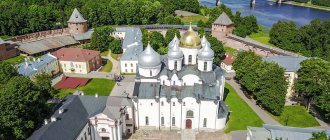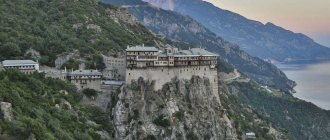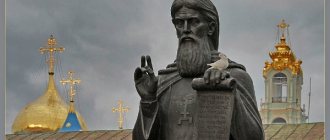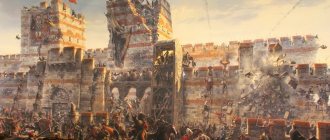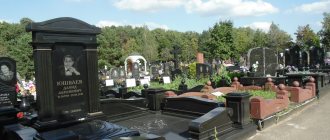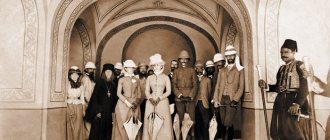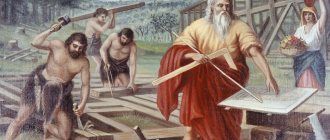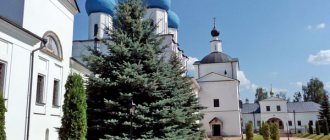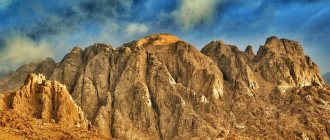Who hasn't heard the myth about the legendary Tower of Babel? People learn about this unfinished structure to the skies even in early childhood. This name has become a household name. But not everyone knows that the Tower of Babel really exists. This is evidenced by ancient records and modern archaeological research.
Babylon is famous for many of its buildings. One of the main figures in the exaltation of this glorious ancient city is Nebuchadnezzar II. It was during his time that the walls of Babylon, the Hanging Gardens of Babylon, the Ishtar Gate and the Processional Road were built.
But this is just the tip of the iceberg - throughout the forty years of his reign, Nebuchadnezzar was engaged in the construction, restoration and decoration of Babylon. He left behind a large text about his work. We will not dwell on all the points, but this is where there is a mention of the Ziggurat of Etemenanki in the city.
Video about the Tower of Babel:
https://youtu.be/1-5eL05xcMU
This Tower of Babel , which according to legend could not be completed due to the fact that the builders began to speak different languages, has another name - Etemenanki, which translated means the House of the Cornerstone of Heaven and Earth. During excavations, archaeologists were able to discover the huge foundation of this building. It turned out to be a ziggurat typical of Mesopotamia (you can also read about the ziggurat in Ur), located at the main temple of Babylon Esagila.
Construction of the Tower of Babel begins [↑]
The initiator of the construction of the Tower of Babel was King Nimrod, who by that time had subjugated the whole world and, feeling the fullness of unlimited power, began to rebel against G-d. In the weekly chapter “Noah” of the first book of the Pentateuch (the book of Bereshit) it is reported that Nimrod “became a hero on earth. He was a hero in fishing before the Lord" (Bereishit 10:8
). Rashi explains these words this way: Nimrod began to incite the whole world to revolt against the Almighty, calling for the construction of the Tower of Babel. He laid nets with his speeches and caught people in them. “Before the Lord” means “deliberately angered G-d,” “having acknowledged Him, I did it in defiance.”
IN 1996
year (1764 BC), at the call of Nimrod, his subjects settled in the Shinar valley and began to build a tower “with its peak reaching to the sky.”
In the absence of other building materials, they began to make bricks from clay and bake them in a kiln (Genesis 11:2-3
).
The tower grew quickly, 600 thousand people took part in its construction - almost the entire population of the earth at that time. Only Noah (Noah), his son Shem, Shem’s great-grandson Eber, Shem’s son Ashur, as well as the forefather Abraham (then still called Abram) did not take part in this.
Phraseologism Pandemonium of Babel.
Pandemonium of Babel meaning 1.
The word pandemonium means the construction of a pillar (the Church Slavonic name for a tower).
The expression Babylonian pandemonium means turmoil, disorderly, fussy, disordered activity that is unable to lead to positive results.
Pandemonium of Babel meaning 2.
Phraseologism Babylonian pandemonium - means polyphonic noise, turmoil, din, chaotic gathering of people.
For what purposes was it built? [↑]
At that time people lived in harmony with each other. They were united by a common language (the holy language of Hebrew) - the language given by G-d himself to the First Man. They had common values: they all wanted to live in safety - without wars, without any disasters (for example, another Flood), they sought to create a prosperous society led by a strong ruler. At the same time, their common goal was to establish the greatness of the human race, to achieve “independence” from the Creator of the world.
This is why the Tower was needed. Some thought that by climbing it they would escape the Flood. Others believed that living all of humanity in one place would help avoid wars. Still others were going to install idols at the top of the Tower, worship them and rule the world without the help of G-d. The fourth went even further: they wanted to put a sword in the hands of the idol in order to threaten G-d in this way. Among the builders there were those who did not admit the possibility of Supreme control of the world at all. In their opinion, the Flood was just a natural phenomenon that occurs once every 1656 years (this period passed from the Creation of the world to the Flood). To prevent this from happening again, they wanted to support the vault of heaven with a high tower.
Babylonian number system
0
In the modern world, the decimal number system is widespread - based on the number of fingers on the hands. The fact is that people did not immediately develop the ability to count abstractly, but using their fingers to count was very convenient and simple. In Babylon, in addition to the traditional decimal system, the duodecimal system was used. It appeared as follows: the phalanges (there were 12 of them) of the other fingers of the hand were counted with the thumb.
Unfulfilled plan [↑]
The builders of the Tower, rebelling against G-d, wanted to glorify themselves, “to make a name for themselves” (Genesis 11:4
). They went towards seemingly reasonable goals (ensuring security, achieving unity and prosperity in society) in a fundamentally wrong way. Therefore, they not only did not achieve what they wanted, but also came to the opposite results.
The further construction progressed, the less human life was valued. Everyone cried with grief when the brick fell down, but no one paid attention to the man who crashed to death. And after the Almighty, having punished them, “confused” their languages, they began to quarrel and kill each other. It became impossible not only to work, but also to live together, and people “scattered across the earth.”
Legends
According to the Bible, the entire human race is the descendants of Noah, who escaped death after the Flood. After Noah and his family left the Ark, according to God’s covenant, they were to multiply, filling the earth with new people. All these people communicated with each other in the same language. In search of a home, people were forced to wander.
A number of biblical scholars trace the connection between the legend of the Tower of Babel and the construction of high tower-temples called ziggurats in Mesopotamia. The tops of the towers served for religious rites and astronomical observations , in which people believed very much in ancient times.
The descendants of Noah, who wandered from east to west, settled in the Shinar Valley (the lower reaches of the Euphrates and Tigris rivers). This country was called Mesopotamia (from the ancient Greek “Mesopotamia”). In ancient Mesopotamia there was a shortage of stone and wood, so people made bricks here.
Having previously burned it for greater strength, fastening them together with silt, they erected strong houses and erected the prosperous, great city of Babylon, literally translated “the gate of the gods.” In order to glorify themselves and prevent the scattering of people across the Earth, the Babylonians decided to build a tower reaching the heavens in height, and thereby elevate themselves to the gods.
The work of the builders was productive thanks to a clear distribution of responsibilities. The tower was supposed to become a kind of beacon for people lost on the plain and the greatest achievement for the people. The Lord was angry at such insolence, since the construction of the tower was not a means of praising God, but an attempt by the people to glorify themselves.
Then God created many different languages and gave them to the descendants of Noah. As a result, the Babylonians ceased to understand each other. The construction of the tower was stopped due to a language barrier. The Tower of Babylon, located, according to biblical legend, in the center of the great city, collapsed. The people, divided into groups, were forced to settle throughout the Earth.
The city of Babylon, after this incident, received a new name - “Babel”, translated from Hebrew - to confuse or mix.
How were the builders punished? [↑]
Several punishments were sent to the builders of the Tower of Babel:
- Mixing of languages
- Scattered throughout the earth
- Destroying them with your own hands
- Transformation into monkeys and elephants
Mixing languages [↑]
In the weekly chapter of Noah we read: “And the Lord came down to see the city and the tower which the sons of men were building. And the Lord said: Behold, there is one people, and they all have one language, and they began to do this... Let us go down and confuse their language there, so that they will no longer understand one another’s speech” (Bereishit 11:5-7
).
Before the Tower of Babel, there was one common language - the holy language (Hebrew). In addition, each nationality had its own language. During the construction period, people communicated only in Hebrew and were like “one people.” But this advantage was used for the wrong purpose - not to serve G‑d, but for the opposite purpose. Therefore, the Almighty made them forget Hebrew, and they each began to speak their own language.
The place where the Tower was built, and subsequently the city and the entire empire of Nimrod, was called Bavel
(
Babylon
) - from the word
“balal”
, that is,
“mixed”
.
This word is also associated with the concept of "bilbul"
- confusion. The generation of the schism was in a state of spiritual fog, having lost its guidelines and clear awareness of the Truth.
Scattering throughout the earth [↑]
People of the generation of schism settled in one place. In addition to the construction of the Tower, there was another meaning in this - to violate the command of the Almighty to settle throughout the entire earth, given after the Flood (Bereishit, 9: 1
).
Commentators explain that when villains get together, it is dangerous for both the world and themselves. Dispelling villains, on the other hand, benefits everyone. (For the righteous these things are reversed.)
Therefore, G-d scattered the builders of the Tower of Babel: everyone returned to the country from which they came.
Destruction [↑]
The construction of the Tower ended with people starting to kill each other. According to some opinions, half of humanity died. Thus the villains were punished with their own hands.
Transformation into monkeys and elephants [↑]
The Midrash tells that some of the builders turned into monkeys and elephants. These creatures are similar to humans: monkeys copy and imitate people, elephants understand human speech. In the Shulchan Aruch there is a blessing that is said at the sight of these animals: “Blessed are You, O Lord our God, King of the Universe, Changer of creation.” This was another punishment determined for the generation of schism.
The builders sinned with pride, wanting to be higher than the heavens themselves and go against God
What commandment did the builders sin against when building the tower? Why did the Tower of Babel fall? Why exactly did this require divine intervention?
If we look, we will see that the Lord God did not punish, but saved humanity from what its activities led to. It was this Babylonian construction that showed that a person is capable of indulging in external aggregate activity to the point of complete self-forgetfulness and dedication, and in such a state no internal work is possible. Yes, and these external activities indicate the spiritual impoverishment of a person.
The Lord destroyed the people's structure because He saw that they were spiritually completely exhausted. They completely began to forget about God. Ahead they saw only pride and their own self. Photo: wikireading.ru
When a person weakens spiritually, he strives to activate himself in all kinds of social activities. When the language withered, man began to withdraw and return to himself.
This made him concentrate on his inner life, realize and decide that, first of all, he needed to make his soul work. It is also possible that the Lord saw evil and did not want it to further become a carrier and infection of other souls.
Generation of the Flood and generation of the Schism: offense and punishment [↑]
The people of the generation of the Flood were murderers, robbers and rapists, but they did not rebel against G-d. The Generation of Schism, on the contrary, sought to undermine the very foundations of the universe. Why was it not completely destroyed like the generation of the Flood?
Commentators answer this question this way. People of the generation of Schism initially treated each other friendly - they advocated unification and were against war. Peaceful relationships are so dear to the Almighty that He treated them mercifully.
Mathematics and astronomy of Babylon
The inhabitants of Babylon were known for their knowledge of mathematics and astronomy. It was they who divided the circle into 360 degrees, and the hour into 60 minutes. In Babylon they invented the decimal number system, they were already able to solve quadratic equations, and also studied the stars, trying to predict the future. Babylonian astronomers named the exact dates of solar and lunar eclipses. These natural phenomena played a big role: it was believed that they meant the end of the king’s reign. That is why a temporary “king” was appointed for the period of the eclipse, who was then killed, fulfilling the omen.
Findings of archaeologists [↑]
According to historians, what remains of the Tower of Babel was destroyed in ancient times during attempts to conquer Babylon. In particular, this was done by the Assyrian king Sancheriv. There were also attempts to restore the Tower - for example, under Nebuchadnezzar.
On the territory of modern Iraq, south of Baghdad, archaeologists found clay bricks burned by fire of terrible force, which cannot be explained from the point of view of the laws of nature. Apparently, this is where the Tower of Babel was located.
For whom were the Hanging Gardens of Babylon created?
0
The Hanging Gardens of Babylon, one of the seven wonders of the world, had nothing to do with Babylon. She lived 200 years before the park was built. This architectural structure was erected by the king of Babylonia, Nebuchadnezzar II, for his young wife Amytis (or, according to other sources, Amanis). Nebuchadnezzar entered into a military alliance with Media to fight Assyria by marrying the daughter of the Median ruler, Amytis. A woman born in a mountainous area with lush vegetation suffered in the deserted and noisy Babylon. The beautiful multi-level garden reminded her of home. The gardens consisted of four different levels, each of which had cool rooms where the royal family rested during the heat. The vaults of the tiers were supported by elegant 25-meter columns. This may seem surprising, but buildings like the Hanging Gardens were not something unique or new in developed Babylon. The fact is that under Nebuchadnezzar II many architectural masterpieces were created. A special feature of the Hanging Gardens was the special implementation of water supply to all levels of the park.
Doctors and medicine
0
The treatment of diseases in Babylon was taken very seriously. The laws of Hammurabi established liability for harm caused to patients. The guilty doctor lost his hand, so in the developed metropolis there was a constant shortage of professional doctors. Often the responsibility to treat citizens' illnesses fell on the citizens themselves. Sick people came to the main city square, and caring residents shared their own experiences, advice and opinions on treatment methods. Babylonian medicine, as was typical of that time, was associated with beliefs. Most treatment methods were based on magical or religious rituals; sometimes the disease was considered to be caused by divine wrath for some offense. Until the middle of the second millennium BC, medicine used practical and magical methods of treatment. Later, ritual methods were used more often by doctors, and to get rid of illness they turned to one of the deities of the Babylonian pantheon.
Legal inequality of Babylon
0
In relation to equal social status, the principle of talion was in effect (for example, for a knocked out eye or tooth, the offender was given an appropriate punishment - the eye or tooth was knocked out). The size of fines for the same offense varied according to the social status of the victim. If a person from the upper class (avilum) was injured, the amount to be paid was very significant.
